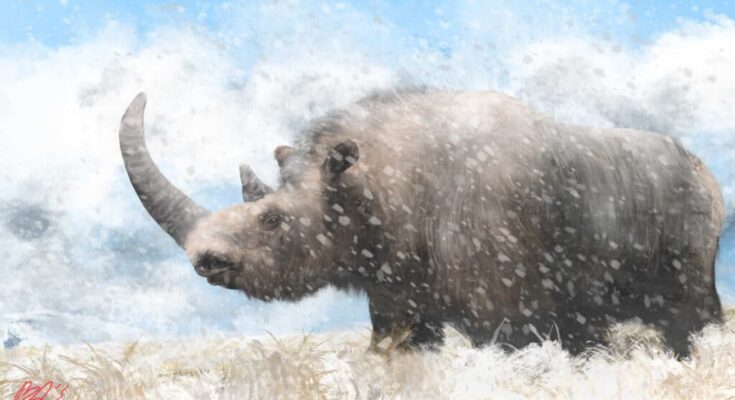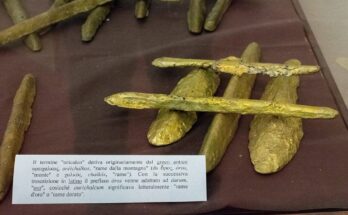
Researchers have found the frozen remains of a half-eaten young woolly rhino in the icy ground of Siberia. Predators likely fed on it thousands of years ago.
The right side of the rhino’s body is in good condition, with patches of fur and skin still visible. However, the left side shows signs of being attacked, either just before or after the animal died.
Researchers from the Russian Academy of Sciences and the Academy of Sciences of the Republic of Sakha reported that the carcass is badly damaged from the thigh to the shoulder blade.
In a study published on July 1st in the journal Doklady Earth Sciences, it was noted that the body’s internal cavity is open, with most of the intestines missing.
The researchers noted that the left side of the carcass shows clear signs of having been ravaged by predators. They also found remains of tiny crustaceans in the fur, suggesting the woolly rhino died in a shallow pool of water.
Woolly rhino died and froze over 32,000 years ago
Woolly rhinos once roamed the Arctic tundra during the last ice age between 460,000 and 12,000 years ago. They were among the largest animals in their environment, second only to the woolly mammoth.
These massive creatures had thick, shaggy fur to survive the frigid climate. Despite their size and presence in the ancient world, scientists still have many questions about their lives and behaviors, as reported by Live Science.
Ice Age Marvel Unearthed! Woolly rhino found preserved in Russian permafrost
Siberia's permafrost has given us a supposedly ~32,000 player minus year old woolly rhinoceros with its fur, skin, and last meal still intact!
This four year old rhino's preservation is super… pic.twitter.com/guyb4jNwgi
— The Jake Buzz (@thejakebuzz) September 26, 2024
This rare discovery of a nearly intact woolly rhino has provided valuable insights for researchers. In August 2020, scientists uncovered the carcass from the frozen banks of the Tirekhtyakh River in northeastern Russia’s Sakha Republic.
They named the find the “Abyisky rhinoceros,” after the local district. The remains were then sent to the Academy of Sciences of the Republic of Sakha, where they are now stored in a freezer.
Defrosting the carcass of a woolly rhino
For the study, researchers temporarily thawed the carcass to gather samples of skin, fur, and soft tissue. They closely inspected its teeth, measured one of its horns, and noted a large fat-filled hump on its back.
The horn was around 9.4 inches (24 centimeters) long, with three to four dark rings. These rings likely indicate the rhino’s age in years. Standing at about 4.3 feet (130 cm) at the shoulder, the young woolly rhino was estimated to be 4 to 4.5 years old at the time of its death, suggesting it had not yet reached maturity.
The fur on this newly discovered rhino was noticeably darker compared to a woolly rhino calf found in 2014 in the same region. That earlier calf, called “Sasha,” had fine, nearly blond hair and had been frozen for over 10,000 years. In contrast, adult woolly rhinos that have been excavated from the ice tend to have thick, dark brown fur.





